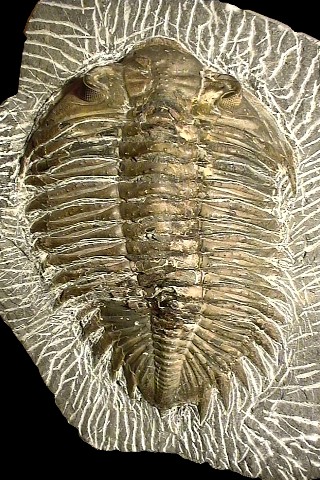
Specimen description :
- Complete trilobite.
- On matrix
- Positive and a part of negative.
- Perfect eyes.
- Multiple granulations on the exosqueletton.
- Strongly 3D.
- Slight disarticulation of the pygidium.
- Total size : 96 mm
- Devonian - Upper Emsian.
- Morocco.
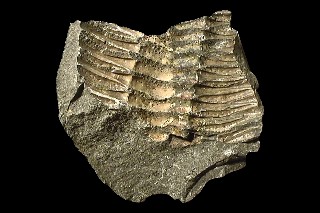
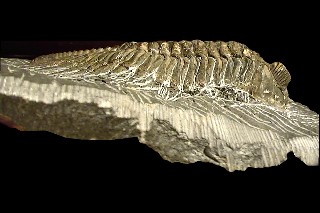
Treveropyge maura
Very rare Devonian Trilobite from Morocco, this trilobite has been recently described by Pierre Morzadec 2001, from a single specimen, in : " Les trilobites Asteropyginae du dévonien de L'Anti-Atlas" (Paleontographica Abt.A, 262 (1 - 3) : pp 53 - 85). I heartily thank Mr Renato Rinaldi who identified this bug for me when I couldn't access that Morzadec's publication.
This specimen is a sad example of the "Moroccan" preparation, though, with its white lines radiating from the bug. These lines make the trilobite analysis tiring and difficult, and moreover, they usually draw borders that are not the exact ones, notably to the spines... and here to the cephalic border (cf. infra).
I present in the second part of the page Treveropyge berbera MORZADEC 2001 to help in an appropriate diagnose.
| 2001 | Treveropyge maura | nov. sp., MORZADEC 2001, p.72, planche 10, fig. 1. |
 |
Specimen description :
|
|
|
Complete view of the specimen.
|
Part ot the negative and lateral view.
|
Diagnosis :
|
Order
|
Phacopida
|
SALTER 1864
|
Occurrence: Lower Ordovician (Tremadoc) to Upper Devonian (Famennian).
|
|
Sub-order
|
Phacopina
|
STRUVE 1959
|
|
|
Super-family
|
Acastoiedea
|
DELO 1935
|
|
|
Family
|
Acastidae
|
EDGECOMBE 1993
|
|
|
Sub-family |
Asteropyginae |
DELO 1935 |
Traditionnally included in the Dalmanitidae, Asteropyginae are now included in the Acastids. Mostly benthic trilobites.
|
|
Genus
|
Treveropyge (Treveropyge) |
STRUVE 1958 |
|
|
Species |
maura |
MORZADEC 2001 |
|
Description :
Complementarily to the diagnosis, one can precise the following points :
Discussion :
Treveropyge berbera differs from Treveropyge maura by a cephalon 2 times wider than long, with a short anterior point. 34 dorso-ventral rows of lenses with 13 lenses maximum per row. Thoracic rachis larger. 12 pygidial axial rings, without tubercles pairs. Pygidial spines flat and short. Median spine shorter than the lateral spines.
Complementary pictures :
Cephalon :
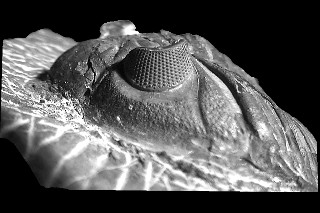 |
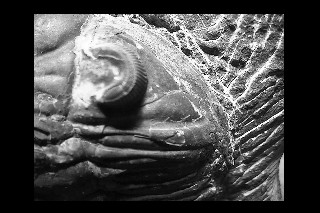 |
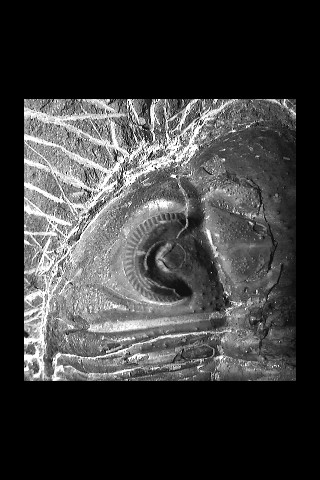 |
|
Left eye.
|
Right facial suture.
|
|
 |
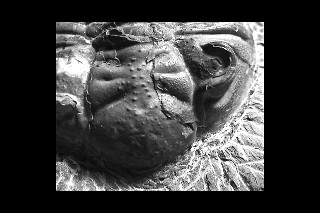 |
|
|
Cephalic granulation.
|
larger granulations, under the exosqueletton.
|
Counting of the dorso-ventral rows of lenses
|
The cephalon presents parts that show exfolliation, revealing granulations different in size and sometimes letting sutures or structures being better shown (see the posterior section of the facial suture).
The problematic anterior border of the cephalon...
The anterior border is supposed to be wedge-shaped, but the prep work did make things unsure there. one can't really say where the exact anterior border is...
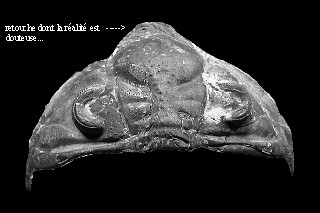 |
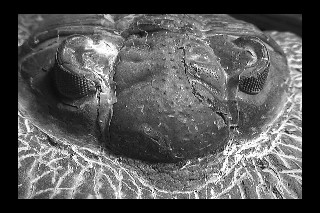 |
|
"Doubtfull outline"... |
"more realistic anterior border" |
Scroll over the picture....
The thorax :
It presents remarkable pair of granulations on the axial rings that will be found on the pygidium too.
The distal extremity of the pleurae is spinose.
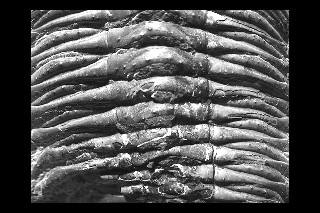 |
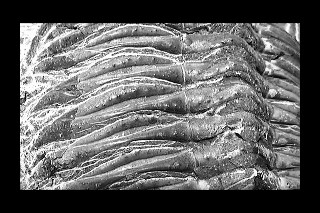 |
|
Dorsal view of the axial rings. Note the pair of granulations.
|
Detail of the spinose tips.
|
The pygidium :
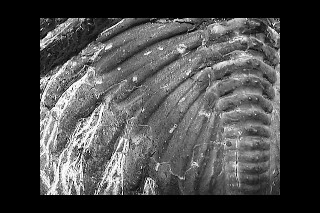 |
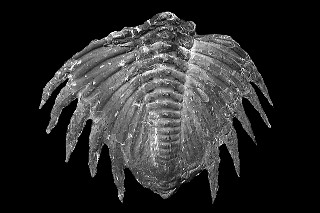 |
|
Prorotundifrons-type segmentation.
|
Triangular pygidium.
|
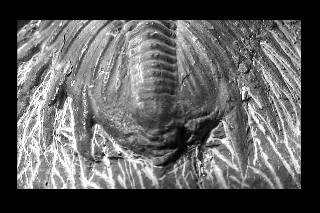 |
|
Scroll over the picture....
Holotypes :
1 - Treveropyge maura :
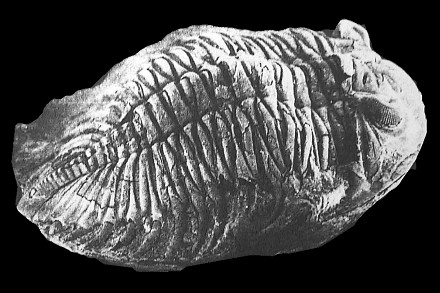 |
 |
|
|
 |
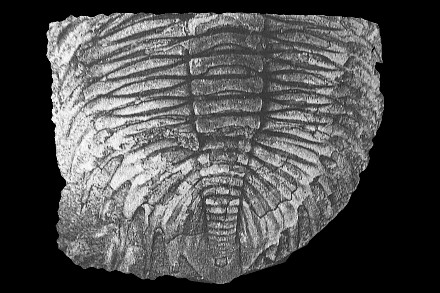 |
|
|
2 - Treveropyge berbera :
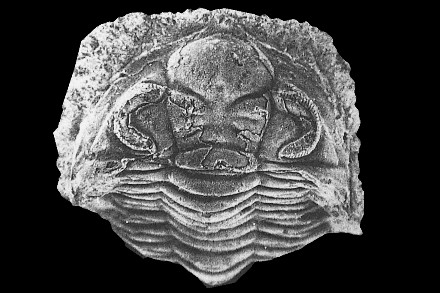 |
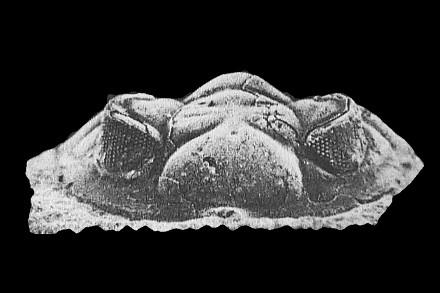 |
|
|
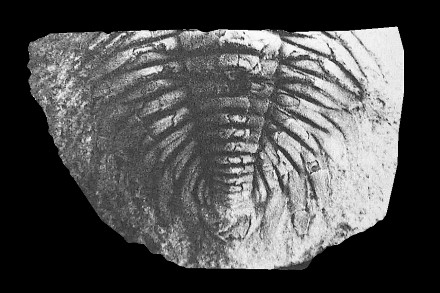 |
|
References :
MORZADEC P. 2001. Les Trilobites Asteropyginae du Dévonien de l'Anti-Atlas (Maroc) [Asteropyginae Trilobites from the Devonian of the Anti-Atlas (Morocco)]. Paleontograph. Abt. A 262 (1/3) : pp 53 - 85.